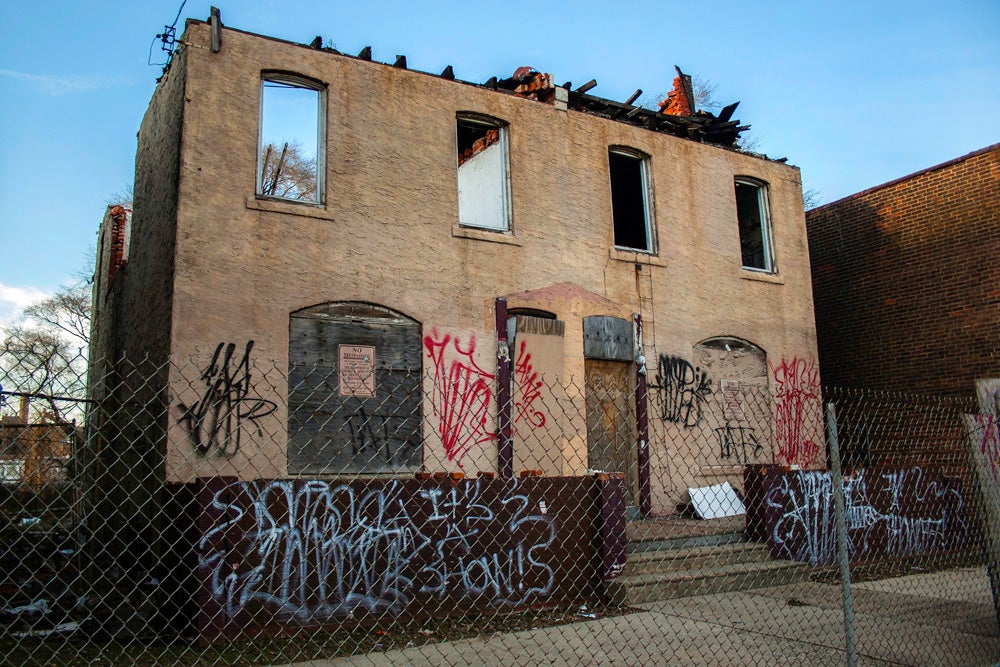Road to development reform should start at L&I

City Council President Darrell Clarke has spent recent months advancing a plan to reorganize the city’s planning and development functions into a new cabinet-level Department of Planning and Development through a change to the city charter.
At a hearing on the matter last week Clarke explained that his goal is to make Philadelphia’s development process more “user friendly” particularly when it comes to helping developers navigate the layered bureaucracy of different agencies.
After initial befuddlement, a chorus of developers, civic groups, and planning advocates asked for more time and a more in-depth process to explore the implications of the major reorganization before a charter change question is put to voters. Last week a council committee held off on advancing Clarke’s reorganization bill. It’s a welcome pause that makes room for productive dialogue. It’s also a good time to regroup and reconsider.
Yes, it’s important to make sure our city’s development process works well for everyone. But it seems that the problems with development Clarke wants to address are the issues most directly affecting developers small and large. Clarke’s concerns don’t benefit the communities who feel frustrated with an overly permissive Zoning Board of Adjustment and a City Council too willing to entertain legislative rezoning requests for large scale projects that bypass the variance process and related community engagement. And the proposal doesn’t relieve the strain on already strapped city departments with barely enough staffing or budget resources to do their current jobs.
Even if we set those shortcomings aside, the most distressing disappointment of Clarke’s reorganization proposal is that it fails to address the Department of Licenses & Inspections (L&I).
Clarke’s plan did originally fold L&I into a new Department of Planning and Development, but that received substantial pushback from officials and public safety advocates. This month Clarke amended his reorganization proposal removing L&I entirely, giving room for the Nutter administration to pursue recommended reforms.
But in sidestepping L&I, Clarke is bypassing an opportunity to strengthen the weakest link in Philadelphia’s permitting and development process.
Instead of setting L&I aside, Clarke should table his larger reorganization plan and focus his energies on fixing the troubled agency. Council needs to dig in on fixing L&I, instead of kicking the issue further down the road, by reengaging with the many recommendations for L&I reform developed by special committees in response to the fatal demolition-related collapse at 22nd and Market.
A rebuilt L&I is probably the one substantial change that would both improve our development climate and increase the safety of construction sites and vacant properties.
So what happened?
Rewind the clock to late September: Mayor Nutter’s task force on reforming L&I released its recommendations developed in the wake of the 22nd and Market tragedy. At the same time Council President Clarke released his own plan to create the Department of Planning and Development. Clarke, who at the time said his plan was unrelated to the collapse, took the opportunity to propose a more sweeping realignment of planning and development functions, including L&I, into a single super-agency.
But Clarke’s inclusion of L&I aligned with neither City Council’s recommendations for improving the agency’s operations nor those made by the mayor’s special commission. To some it also buried L&I’s safety mandate too deeply in layers of bureaucracy and sent a message that public safety took a backseat to development.
Meanwhile L&I is in hot water again. Just this weekend an Inquirer cover story described another tale of demolition dysfunction complete with unsafe practices by a contractor who officials knew didn’t have permits to demolish half of a block at 26th and Poplar streets. Scott Mulderig, the L&I official in charge of demolition, has been reassigned pending an investigation.
Philly seems to have no shortage of ticking time bombs – from unsafe demolition and construction sites to vacant properties – that fall under L&I’s purview. Public trust in the agency is undermined. The agency’s understaffing and inconsistent permit reviews give L&I a reputation for inefficiency and unpredictability, which diminish the city’s development climate. There is also an unresolved tension between the department’s pro-development permitting functions and its public safety and inspections mandate.
Taking L&I off the table entirely is not a solution. It’s challenges aren’t going to disappear.
But here, Clarke has an opportunity to lead. He should turn his reorganizing energies to reforming L&I. He has the chance to make an earnest effort to find common ground between his hopes of a more user-friendly development process and the recommendations from both City Council and the mayor’s special commission on reshaping L&I. Charter change may make sense when it comes to finding better points of alignment – or separation – among review boards, permitting agencies, and public safety. No band-aids will do.
We need to hear a lot more from the Mayor on this front, too. I expect we’ll learn more about changes at L&I as budget season rolls around in spring. For now, we know this: The Inquirer reported that the Nutter administration estimates that it will cost $13.9 million to improve L&I’s staffing and equipment to realize the mayor’s special advisory commission recommendations.
That’s a hefty price, but inaction exacts a cost too.
WHYY is your source for fact-based, in-depth journalism and information. As a nonprofit organization, we rely on financial support from readers like you. Please give today.








